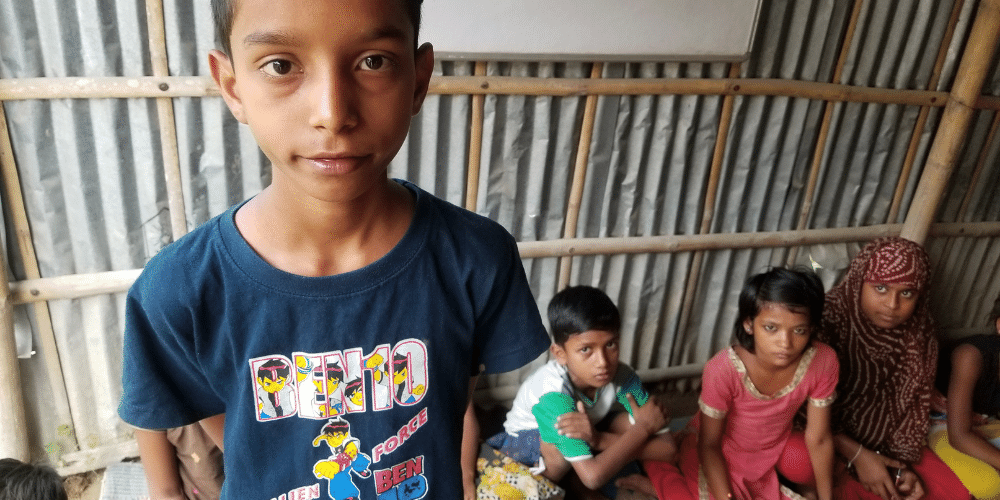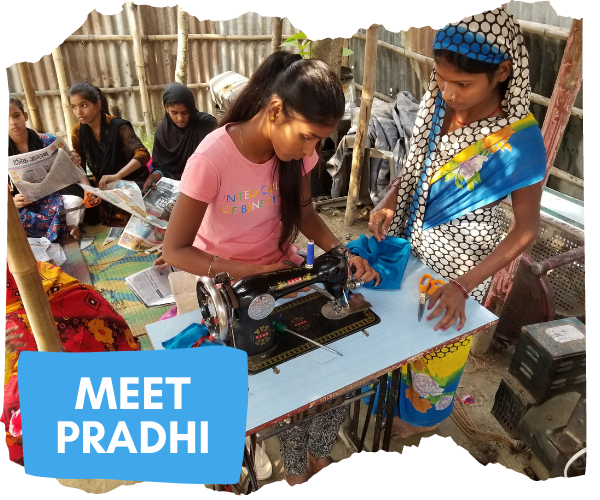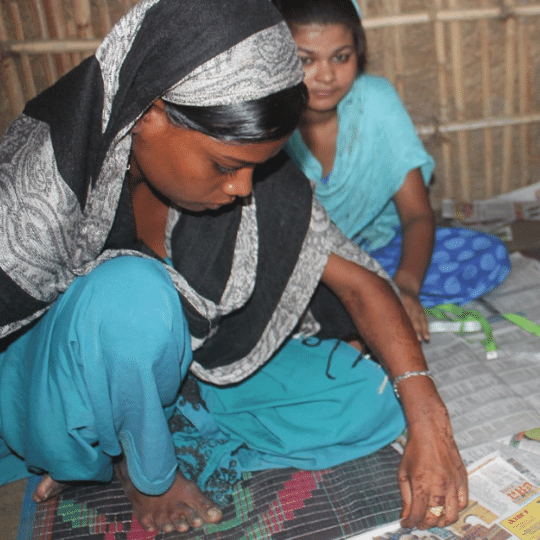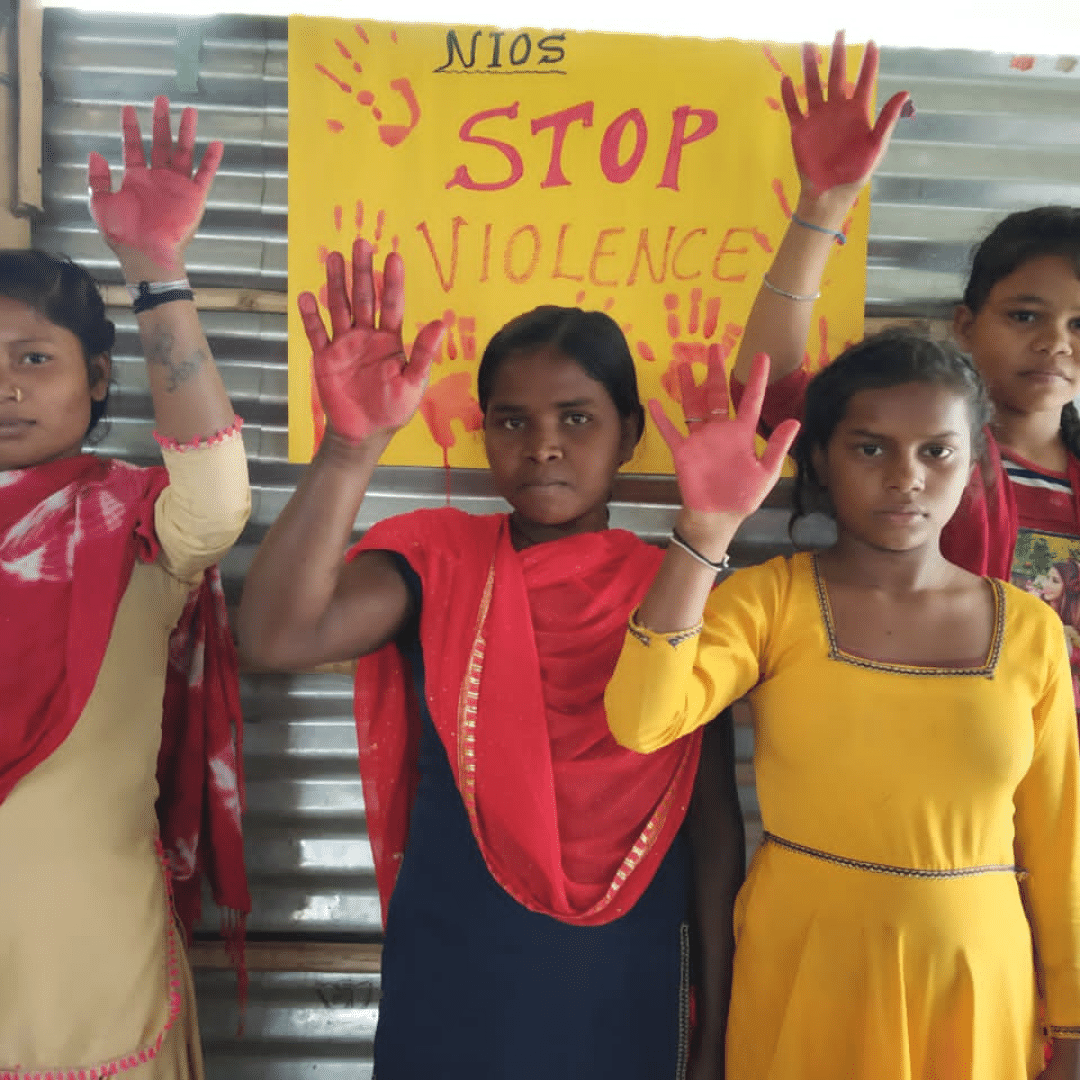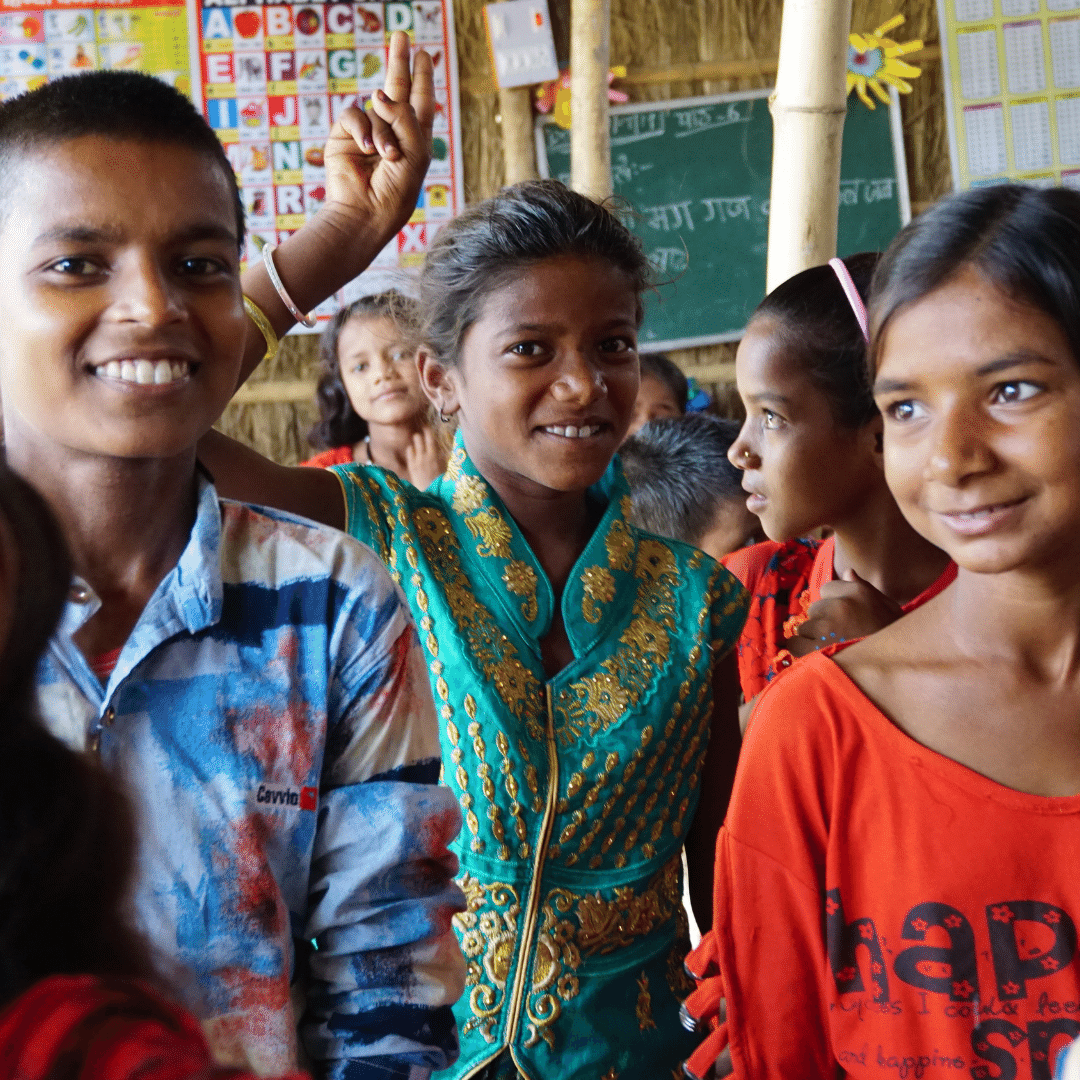Between 2014 and 2022 Children on the Edge supported two Education Centres in two prominent red light areas in Bihar, on the Nepalese border to support women and children trafficked into the area from Nepal.
The centres offered skills training and basic education for 30 young women and 60 children in the hope that they could explore alternative options to the sex trade.
WHAT WE DID TO HELP
Together with our partner organisation Tatvasi Samaj Nyas (TSN), we established two Education Centres in two of Bihar’s most prominent red light areas.
The government will not run schools in these places, so the centres provided training and care to some of India’s most vulnerable children living in these red light areas, cut off from education and at risk of being drawn into prostitution.
The centres offered basic education in maths and literacy to over 60 children. The children are also taught about their value and rights in the hope they can explore alternative options to the sex trade.
Teachers were trained to create a safe and caring environment where children are free to express themselves, emphasising the intrinsic value of each child, as migrants often feel scorned by society.
A sewing programme also equipped 30 young women each year with skills to support themselves and provide practical means to leave the red-light areas and find alternative employment.
Over the last few years our partners, TSN, have contributed to major changes within the local community culture. They have educated parents on the issues related to the prevention of trafficking, trained many women and children with the skills to find employment or start businesses and through the provision of basic education, made it possible for many children to begin attending government school.
TSN has also strengthened as an organisation, improving on communication and reporting and extending their work to new communities. With these successes and new steps, the time was right for them to carry on their great work, functioning independently from our support in 2022.
The government will not run schools in these places, so the centres provided training and care to some of India’s most vulnerable children living in these red light areas, cut off from education and at risk of being drawn into prostitution.
The centres offered basic education in maths and literacy to over 60 children. The children are also taught about their value and rights in the hope they can explore alternative options to the sex trade.
Teachers were trained to create a safe and caring environment where children are free to express themselves, emphasising the intrinsic value of each child, as migrants often feel scorned by society.
A sewing programme also equipped 30 young women each year with skills to support themselves and provide practical means to leave the red-light areas and find alternative employment.
Over the last few years our partners, TSN, have contributed to major changes within the local community culture. They have educated parents on the issues related to the prevention of trafficking, trained many women and children with the skills to find employment or start businesses and through the provision of basic education, made it possible for many children to begin attending government school.
TSN has also strengthened as an organisation, improving on communication and reporting and extending their work to new communities. With these successes and new steps, the time was right for them to carry on their great work, functioning independently from our support in 2022.
WORKING ON 'THE EDGE' ON THE INDIA - NEPAL BORDER
Few people are aware that the India-Nepal border is one of the largest corridors for human trafficking on the planet. While the outside world pays little notice, the problem has reached endemic proportions with an estimate of nearly 200,000 Nepalis having already been trafficked into India.
Each year an estimated 7,000-10,000 women and children are trafficked through Bihar, many ending up in de facto slavery in Bihar’s red-light zones. With nearly a quarter of those trafficked below the age of 16, the situation is particularly grave for children.
The vast majority of these victims are women and children who are subjected to forced labour, prostitution, and sexual abuse. The porous, 400 mile-long border between southern Nepal and Bihar, one of India’s poorest states, is an ideal environment for traffickers to operate within.
There was a further spike in the trafficking of women and children since the devastating April 2015 earthquake in Nepal. At this time, the Indian government agency charged with protecting its border (Sashastra Seema Bal) reported a “massive spurt” in the forced movement of women and children from Nepal along the Bihar border. While exact numbers are impossible to attain, it is clear that what is already an appalling situation was made even worse by this natural tragedy.
There are numerous causes for this problem on both sides of the border, but the primary reason is that Nepal is an agrarian country which lacks sufficient infrastructure and economic opportunities to support its population of nearly 23 million people.
About 90% of its inhabitants rely on subsistence agriculture to survive. More than half of Nepal’s women are illiterate, poorly-educated and, therefore, easily targeted by traffickers.
Currently, the precedent for young girls in these communities is to follow their mothers into prostitution. Parents surveyed from the community say they would prefer that their children find other means of employment, but, with limited choices, many children are still drawn into the same line of work.
Each year an estimated 7,000-10,000 women and children are trafficked through Bihar, many ending up in de facto slavery in Bihar’s red-light zones. With nearly a quarter of those trafficked below the age of 16, the situation is particularly grave for children.
The vast majority of these victims are women and children who are subjected to forced labour, prostitution, and sexual abuse. The porous, 400 mile-long border between southern Nepal and Bihar, one of India’s poorest states, is an ideal environment for traffickers to operate within.
There was a further spike in the trafficking of women and children since the devastating April 2015 earthquake in Nepal. At this time, the Indian government agency charged with protecting its border (Sashastra Seema Bal) reported a “massive spurt” in the forced movement of women and children from Nepal along the Bihar border. While exact numbers are impossible to attain, it is clear that what is already an appalling situation was made even worse by this natural tragedy.
There are numerous causes for this problem on both sides of the border, but the primary reason is that Nepal is an agrarian country which lacks sufficient infrastructure and economic opportunities to support its population of nearly 23 million people.
About 90% of its inhabitants rely on subsistence agriculture to survive. More than half of Nepal’s women are illiterate, poorly-educated and, therefore, easily targeted by traffickers.
Currently, the precedent for young girls in these communities is to follow their mothers into prostitution. Parents surveyed from the community say they would prefer that their children find other means of employment, but, with limited choices, many children are still drawn into the same line of work.
|
PRADHI is 15 years old and lives in a red light area in Bihar. Her parents left to find work, so she had to fend for herself, take care of her three younger siblings and look after her grandmother. She attended a sewing course at our Education Centre. Prahdi and said she would like to move out of the area and start her own tailoring shop. |
YOU MIGHT LIKE
|
READ ABOUT THE SEWING CLASSES GIVING A WAY OUT OF PROSTITUTION THE NEPALESE BORDER
|
READ HOW OUR LEARNING CENTRES IN PATNA ARE PREVENTING CHILD MARRIAGE
|
READ ABOUT HOW WE'RE TACKLING CASTE DISCRIMINATION IN INDIA
|

